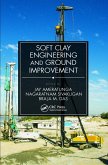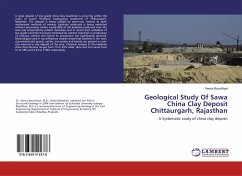High Quality Content by WIKIPEDIA articles! The London Clay Formation is a marine geological formation of Ypresian (Lower Eocene Epoch, c. 56-49 Ma) age which crops out in the southeast of England. The London Clay is well known for the fossils it contains. The fossils from the Lower Eocene indicate a moderately warm climate, the flora being tropical or subtropical. Though sea levels changed during the deposition of the Clay, the habitat was generally a lush forest - perhaps like in Indonesia or East Africa today - bordering a warm, shallow ocean. The London Clay consists of a stiff, bluish coloured clay which becomes brown when weathered. Nodular lumps of pyrite and crystals of selenite frequently occur within the clay, and large septarian concretions are also common. These have been used in the past for the manufacturing of cement. They were once dug for this purpose at Sheppey, near Sittingbourne, and at Harwich, and also dredged off the Hampshire coast. The clay itself has been used commercially for making bricks, tiles, and coarse pottery. It is infertile for gardens and crops.
Bitte wählen Sie Ihr Anliegen aus.
Rechnungen
Retourenschein anfordern
Bestellstatus
Storno








